
|   |

|   |
Natya on the legends of 12 Jyotirlingams - Manjari Sinha e-mail: manjari@sinha.com Photos courtesy: SUNAINA October 25, 2022 Guru Kanaka Sudhakar, the founder and president of the Society for the Upliftment of National Arts of India (SUNAINA), has been working for the past three decades with the purpose of serving art, education and culture. With an aim to empower women through classical dance training as a life skill and reach classical arts of dance and music to the masses through training and presentations, she has also conducted research on the beneficial and therapeutic effects of Indian classical dances on body, mind and soul, spreading awareness about it through lecture demonstrations. A well-known exponent of Bharatanatyam and Kuchipudi classical dance forms, Kanaka has trained a large number of students at Nritya Bharati and the Bharata Muni Spiritual-Cultural Academic Centre along with Kala-Khoj for research oriented work. She has produced DVDs like 'Nrittam’, an understanding of Bharatanatyam Adavus, and ‘Yogic Aerobics’, on fitness system based on Indian classical dance movements and also authored books like Indian Classical Dances - the Therapeutic Advantages, and Bharatiya Shastriya Nritya. She has been annually organizing ‘Indradhanush - Dilli’, a seven-day National Festival of Arts to promote talented children and youth. 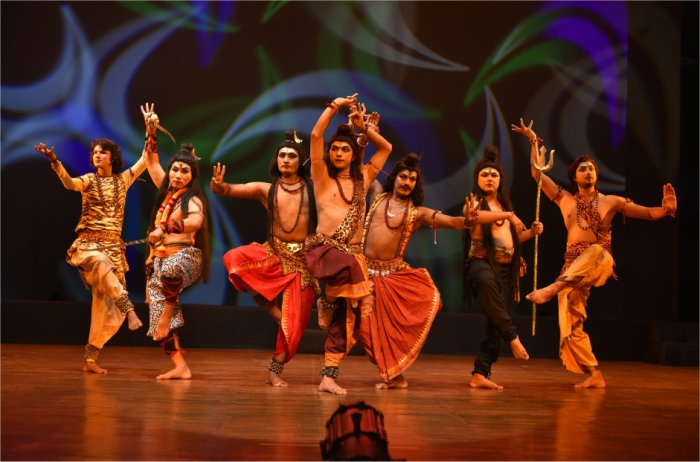 Her latest production "The Legends of Jyotirlingam” presented by SUNAINA at the Kamani auditorium, Delhi recently, was an original Natya (dance drama) she created with profound research and study into the Maheshwara Sutras and Dwadasa Jyotirlinga Stotram. The Sanskrit shlokas used for the natya is taken from the ‘Kotirudra Samhita’ of Shiva Purana. Conceptualized, scripted, choreographed, and directed by Kanaka Sudhakar, this unique production depicts the special Yogic nature of Shiva Tandava through Shiva’s manifested form as the pillar of light (Jyotirlinga) in twelve sacred places across the country. Danced by seven young male dancers trained in different Indian classical, neo-classical and contemporary dance styles, the Shiva Tandava performed in their own specific styles, creates a dramatic effect to each episode of mythological stories about the legends of the 12 Jyotirlingams. 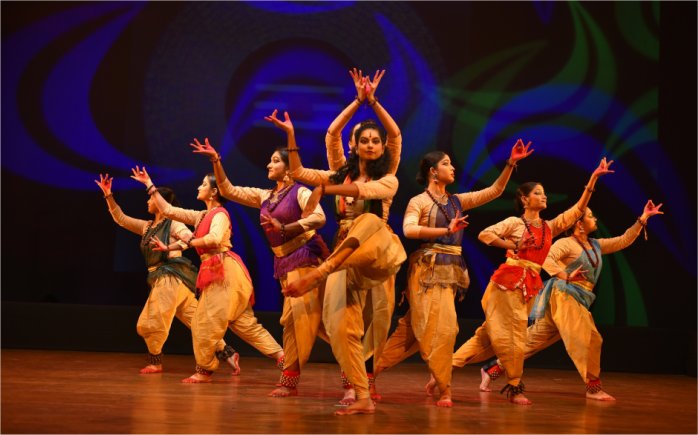 The dance drama production opened with a projection of the galaxy of stars that form the universe. The form of Nataraja emerged on the screen to the narration of “Nrittavasane Nataraja rajo nanaad dhakka nav pancha vaaram…” along with the simultaneous entry of Lord Nataraja dancing to the beat of his damaroo creating 14 different sounds. His dancing on these sounds in three speeds provides an appropriate preface for the dancers who appear to depict the ‘Dwadasa Jyotirlinga Stotram’ “Sauraashtre Somanathancha Shrishaile Mallikarjunam…”, explaining the locations of the 12 Jyotirlingams where Lord Shiva is worshipped as the pillar of light. The legends of Jyotirlingams are based on 12 legendary stories from the Kotirudra Samhita in which Lord Shiva personally visits these sacred places and takes the form of a particular Jyotirlingam like Somnath in Gujarat, Mallikarjuna at Srisailam, Mahakaleshwara in Ujjain, Omkareshwara on the Vindhya mountains, Vaidyanatha in Parli village of Maharashtra, Bhimashankar in Maharashtra, Rameshwar at Rameshwaram in Tamilnadu, Nageshwar in Dwaraka, Vishweshwar in Varanasi, Trayambakeshwar on the banks of river Gautami in Nasik, Kedarnath in Uttarakhand and Grishneshwar in Berul village of Aurangabad, Maharashtra. 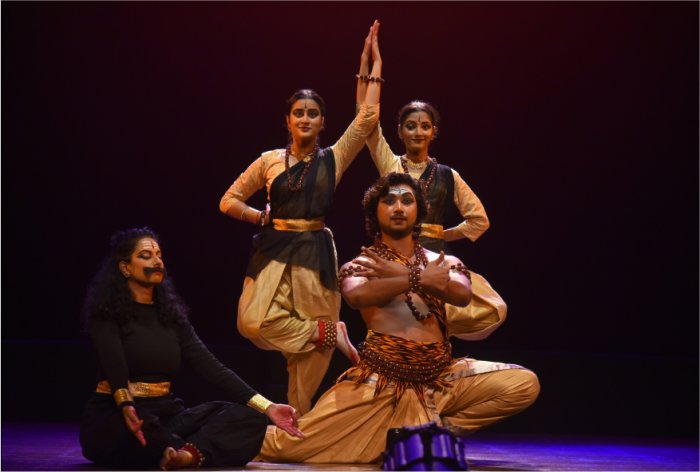 The mythological stories related to each of the Jyotirlingam are picked up carefully, narrated in dance drama form with appropriate music, dance sequences, aharya, the costume and makeup, etc, most imaginatively. Somnath for instance has the colorful Kathiawadi lehengas and odhani with attractive mirror work, whereas the Soma or moon had a black and white mask to depict the Shukla and Krishna Paksha related to the moonlight and darkness respectively. Even the music changed according to the need of the special scenes relating to the story. The competitive spirit of Kartikeya and Ganesha, for instance, was depicted through the sound of percussions in reference to the legend of Srisailam. In each sequence the story about a particular Jyotirlinga would be screened first and then depicted through the dance choreography for easy understanding of the audience. This production amalgamates Indian classical, traditional, martial, folk, and contemporary dance forms in its imaginative choreography with matching music by Athul Kumar, who sang, provided voice-over, and composed music for an orchestra comprising forty instruments. The talented artistes as Lord Shiva were Odissi exponent Sudarshan Sahoo as Mahakaleshwar and Vishveshwar, Kuchipudi dancer Gururaju as Mallikarjuna and Grishneshwar, Bharatanatyam dancer Suhail Bhan as Omkareshwar and Rameshwar, Kathak dancer Praveen Parihar as Somnath and Trayambakeshwar, Mayurbhanj Chhau dancer Sumit Kumar as Vaidyanath and Kedarnath, Indian contemporary dancer Pritpal Singh as Nageshwar and Manipuri martial Thang Ta artiste Senyai Meitei as Bhimashankar. 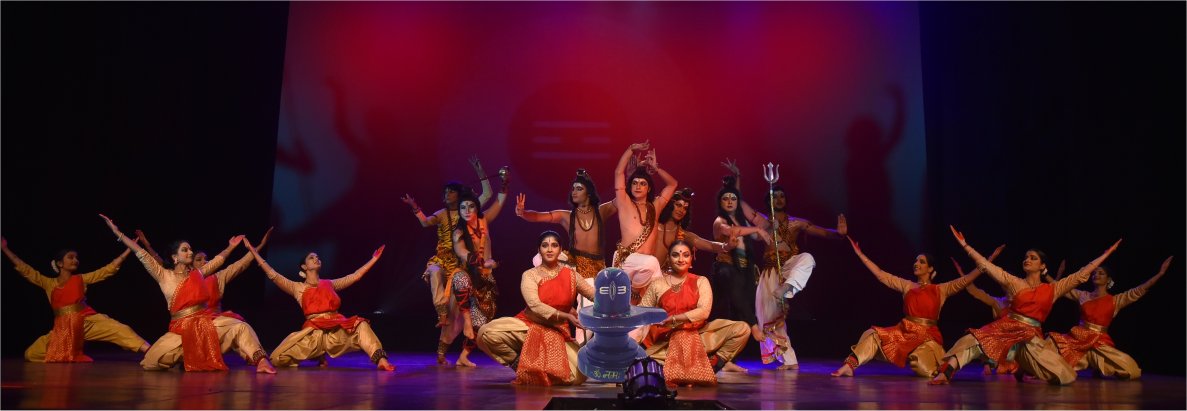 The Bharatanatyam based dance sequences connecting the stories of various Jyotirlingams were performed by the senior disciples of Guru Kanaka Sudhakar namely Aparajita Sharma, Upasana Gagneja, Praharini Vadlamani, Shrutika Narang, Saradyuthi Vadlamani, Akshita Pillai, Aanyashree, Sejal Mehra, Arunima Rawat and Garima Pendharkar. Light design by Sandeep Dutta, costumes by Sohan Lal, Gaji, Ratna Mala, Dress to Impress, Nazreen, and makeup by Subhash Gupta and team were simply perfect with projections and designs taken care of by Aparajita Sharma. The grand production sponsored by the National Cultural Fund, Ministry of Culture, Govt of India in association with Sahitya Kala Parishad and Indo Trans Shipping Pvt Ltd has taken a tour of all the twelve holy places where Lord Shiva is worshipped as a pillar of light - Jyotirlingam on the invitation of Ministry of Culture, GOI. And this is no mean feat. No wonder when Dr. Sonal Mansingh was requested to say a few words as the guest of honour, she humbly refused it saying, “This is not an occasion for speech. The ‘Shiva Aradhana’ is going on and the Mahamantra “Om Namah Shivaya” is going on inside me and the audience, let it continue.” And she complimented Guru Kanaka Sudhakar on this well-researched production. 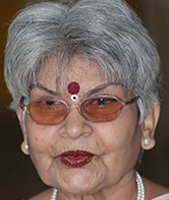 Manjari Sinha has an M.A. in Sanskrit and Music, and trained in vocal, tabla, sitar and Kathak dance. She has regular columns in national dailies as a music and dance critic. |